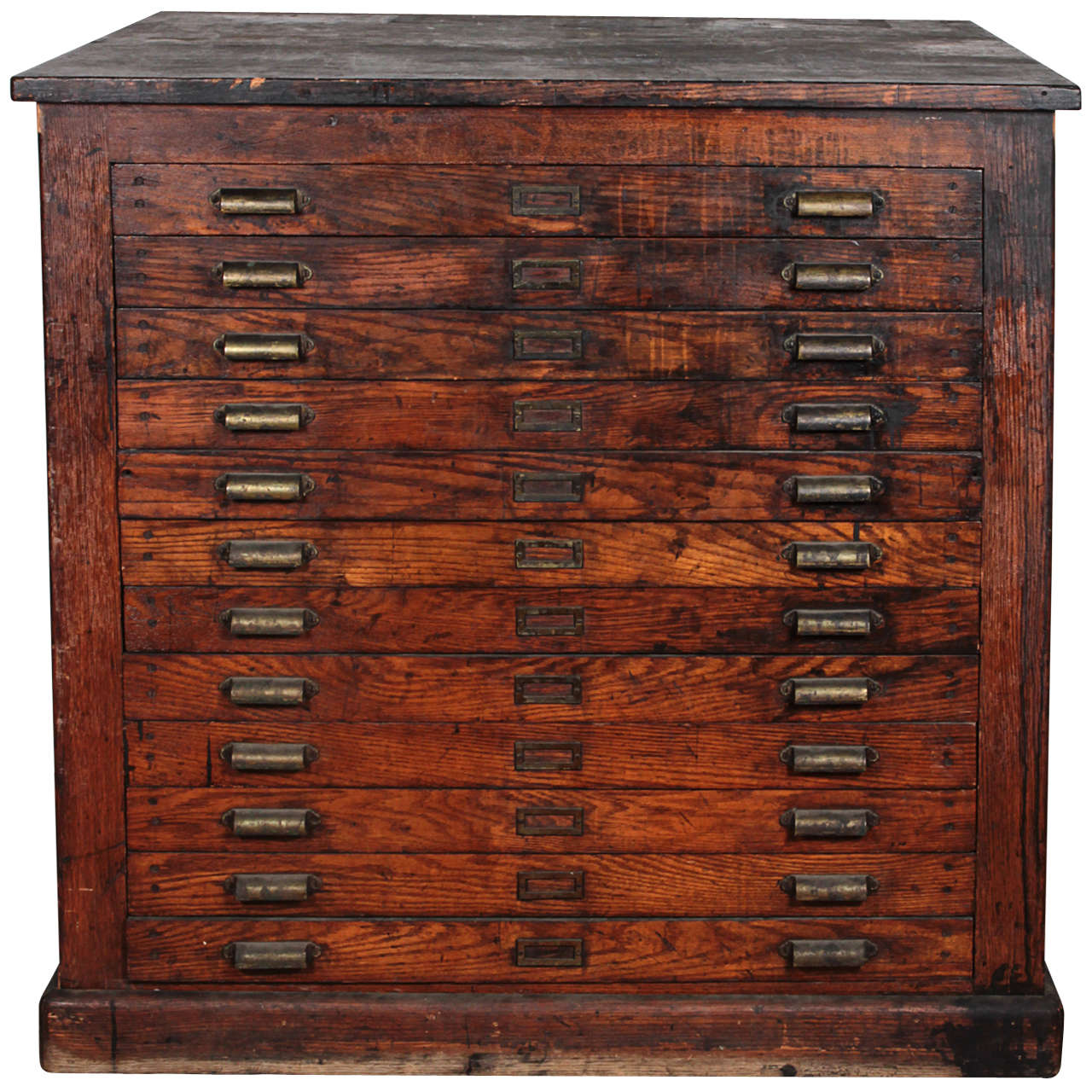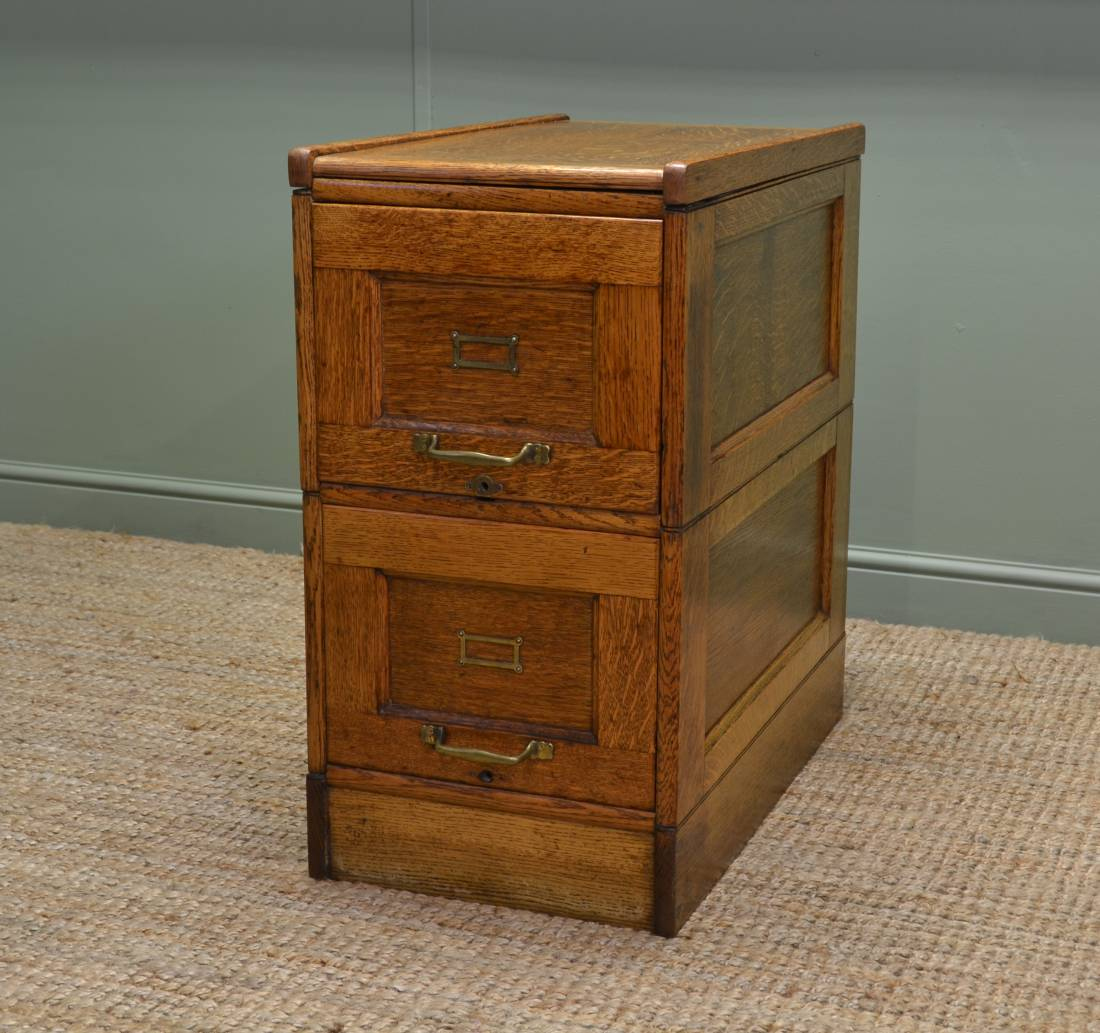History and Significance of Antique Wood File Cabinets

Before the advent of digital storage, organizing and preserving important documents was a vital task. Antique wood file cabinets, with their intricate craftsmanship and enduring presence, played a pivotal role in this process, serving as silent witnesses to the evolution of business practices, societal advancements, and the changing landscape of information management.
Evolution of File Cabinets
The origins of file cabinets can be traced back to the 18th century, when the rise of commerce and record-keeping demanded efficient storage solutions. Early file cabinets were often simple wooden chests or drawers, primarily used by merchants, lawyers, and government officials. As the 19th century progressed, the industrial revolution brought about new materials and manufacturing techniques, leading to the development of more sophisticated file cabinets. These cabinets featured innovative designs, including vertical drawers, suspension systems, and standardized filing methods.
Historical Context and Societal Influences
The design and function of antique wood file cabinets were heavily influenced by the prevailing societal trends and technological advancements of their time. The Victorian era, for instance, saw a surge in the popularity of elaborate, ornate cabinets, reflecting the era’s penchant for decorative craftsmanship. The rise of the office as a distinct work environment in the late 19th and early 20th centuries further spurred the development of practical and efficient file cabinets, designed to accommodate the growing volume of paperwork generated by businesses and institutions.
Prominent Makers, Styles, and Regions
Antique wood file cabinets were produced by a wide array of makers, each contributing to the diversity of styles and craftsmanship that characterize these historical artifacts. Some prominent makers included:
- Yawman & Erbe, a leading manufacturer of office furniture in the late 19th and early 20th centuries, known for their innovative filing systems and sturdy construction.
- Art Metal Construction Company, renowned for their elegant and functional file cabinets, often featuring intricate metal accents and distinctive designs.
- Globe-Wernicke, a company that pioneered the concept of modular office furniture, producing a wide range of file cabinets that could be customized to suit individual needs.
Antique wood file cabinets are found in various styles, reflecting regional and stylistic preferences. Examples include:
- Mission style, characterized by its simple, clean lines and emphasis on functionality, often featuring solid wood construction and minimal ornamentation.
- Arts & Crafts style, known for its handcrafted details, use of natural materials, and emphasis on craftsmanship, often incorporating intricate carvings and decorative elements.
- Art Deco style, distinguished by its geometric patterns, bold colors, and streamlined forms, often featuring metallic accents and a modern aesthetic.
Craftsmanship and Materials
Antique wood file cabinets were meticulously crafted using high-quality materials and time-honored techniques. Common woods used in their construction included oak, mahogany, cherry, and walnut, chosen for their durability, beauty, and resistance to wear and tear. The cabinets were often built using traditional joinery methods, such as mortise and tenon joints, dovetail joints, and hand-cut dovetails, ensuring structural integrity and longevity. The drawers were typically made of solid wood, with smooth-operating slides and intricate detailing. Some cabinets also featured brass hardware, such as handles, pulls, and locks, adding a touch of elegance and durability.
Significance as Historical Artifacts
Antique wood file cabinets serve as valuable historical artifacts, providing insights into past work practices, storage needs, and aesthetic preferences. They offer a glimpse into the evolution of business and society, reflecting the changing nature of information management and the evolving role of the office in our lives. These cabinets are not simply pieces of furniture; they are tangible reminders of the past, preserving a rich history of craftsmanship, design, and innovation.
Identifying and Appreciating Antique Wood File Cabinets

Antique wood file cabinets are more than just storage solutions; they are pieces of history that reflect the craftsmanship and design sensibilities of their era. Understanding their key features, materials, styles, and condition can help you identify and appreciate these unique artifacts.
Materials and Their Influence
The materials used in antique file cabinets play a significant role in their appearance, durability, and value. Common materials include:
- Oak: A sturdy and durable hardwood, oak is often found in Victorian and Arts and Crafts file cabinets. Its distinctive grain pattern and rich color contribute to the cabinets’ timeless appeal.
- Mahogany: Known for its beautiful reddish-brown hue and fine grain, mahogany was favored for its elegance and luxurious appearance in Edwardian and Art Deco file cabinets.
- Walnut: A strong and resilient wood with a distinctive dark brown color and intricate grain patterns, walnut is often used in Mid-Century Modern and contemporary file cabinets.
- Cherry: Cherrywood, with its warm reddish-brown tones and elegant grain, adds a touch of sophistication to file cabinets, particularly those from the Arts and Crafts and Mission styles.
The quality of the wood, the type of finish, and the presence of decorative elements can significantly influence the value of an antique file cabinet.
Styles and Their Defining Features, Antique wood file cabinet
Antique file cabinets reflect the design trends of their time, with distinct styles that are easily recognizable.
- Victorian: Victorian file cabinets often feature intricate carvings, ornate hardware, and dark, rich finishes. They may have elaborate details like scrollwork, floral motifs, and heavy, decorative feet.
- Arts and Crafts: This style emphasizes simplicity, functionality, and natural materials. Arts and Crafts file cabinets often have clean lines, understated hardware, and a focus on craftsmanship. They may incorporate geometric patterns, stained glass, or hand-forged iron accents.
- Mid-Century Modern: Mid-Century Modern file cabinets are characterized by their sleek, minimalist designs, often featuring simple geometric forms, light-colored woods, and chrome or brass hardware.
Assessing Condition and Authenticity
When evaluating an antique file cabinet, it’s crucial to assess its condition and authenticity.
- Patina: A natural patina, which is a layer of age-related discoloration and wear, can enhance the beauty and value of an antique file cabinet. However, excessive wear or damage can indicate a need for restoration.
- Wear: Examine the cabinet for signs of wear, such as scratches, dents, or water damage. While some wear is expected on antique furniture, significant damage can affect its value.
- Restoration: Be aware of any restorations or repairs that may have been performed. While professional restorations can improve the condition of a cabinet, they may also affect its value. Look for signs of recent repairs, such as mismatched wood or paint.
- Authenticity: Verify the authenticity of the cabinet by examining its construction, hardware, and any markings or labels. Look for signs of age-appropriate craftsmanship and materials. Consult with experts or antique dealers to confirm the authenticity of a piece.
Appreciating Craftsmanship, Design, and Historical Context
Antique wood file cabinets are not only functional pieces but also works of art that reflect the skills of their makers and the tastes of their time.
“These cabinets are more than just storage solutions; they are testaments to the craftsmanship and design sensibilities of their era.”
- Craftsmanship: Appreciate the craftsmanship that went into building these cabinets, from the selection of wood to the meticulous joinery and finishing techniques.
- Design: Consider the design elements that make each cabinet unique, such as its style, proportions, and decorative details.
- Historical Context: Understand the historical context in which the cabinet was created. Research the time period, the maker, and the intended use of the cabinet to gain a deeper appreciation for its significance.
Antique wood file cabinets are valuable not only for their functionality but also for their historical significance and aesthetic appeal. By understanding their key features, styles, and condition, you can appreciate the craftsmanship and design of these unique artifacts.
Collecting and Restoring Antique Wood File Cabinets

Antique wood file cabinets, relics of a bygone era, hold a captivating allure for collectors and enthusiasts alike. These sturdy and elegant pieces of furniture not only serve as functional storage solutions but also offer a glimpse into the past, whispering tales of businesses, homes, and the people who used them. Their timeless appeal lies in their craftsmanship, historical significance, and the potential to be lovingly restored to their former glory.
Finding and Authenticating Antique Wood File Cabinets
Finding authentic antique wood file cabinets requires a blend of research, patience, and a keen eye. These treasures can be discovered in a variety of places, each presenting its own set of opportunities and challenges.
- Antique Shops and Dealers: These are excellent starting points for finding antique wood file cabinets. Reputable dealers often have a deep knowledge of their inventory and can provide valuable insights into the history and condition of the pieces.
- Online Marketplaces: Websites like eBay, Etsy, and specialized antique marketplaces offer a vast selection of antique wood file cabinets. However, it’s crucial to carefully examine the listings, photos, and seller reviews to ensure authenticity and avoid scams.
- Estate Sales and Auctions: These events can be a treasure trove for antique hunters. Be prepared to sift through a variety of items, but the potential rewards can be significant.
- Thrift Stores and Flea Markets: While less common, antique wood file cabinets can occasionally be found in thrift stores and flea markets. It’s worth taking a look, as you might stumble upon a hidden gem.
Once you’ve found a potential candidate, it’s essential to authenticate its age and origin. This process involves examining various factors, including:
- Construction and Materials: Antique wood file cabinets were often crafted using solid wood, hand-cut joinery, and traditional finishing techniques. Look for signs of craftsmanship, such as dovetail joints, mortise and tenon construction, and hand-planed surfaces.
- Hardware and Finishes: The hardware and finishes can provide clues about the cabinet’s age and origin. Antique hardware is often made of brass or iron, with distinctive designs and patina. The finish may show signs of wear and tear, but it should be consistent with the age and style of the piece.
- Branding and Labels: Some antique wood file cabinets may have branding or labels that indicate the manufacturer or date of production. These markings can be invaluable for authentication.
- Expert Consultation: If you’re unsure about the authenticity of a cabinet, consider seeking expert consultation from an antique appraiser or furniture restorer. They can provide a professional assessment and help you determine the piece’s true value.
An antique wood file cabinet is a statement piece, adding a touch of vintage charm to any room. Its sturdy construction and classic design make it perfect for storing important documents or creating a unique display area. Imagine pairing it with white bedroom curtains with valance for a touch of elegance, transforming the cabinet into a focal point in a cozy reading nook or a stylish office space.
The combination of rustic wood and flowing white fabric creates a sense of timeless beauty and inviting warmth.
An antique wood file cabinet adds a touch of vintage charm to any room, and its sturdy construction can stand the test of time. Imagine pairing it with a purple and white bedroom decor scheme, where the cabinet’s warm wood tones complement the cool hues, creating a truly unique and inviting space.
The cabinet can even be repurposed as a stylish nightstand or a decorative storage solution, showcasing your love for both vintage aesthetics and practical functionality.
